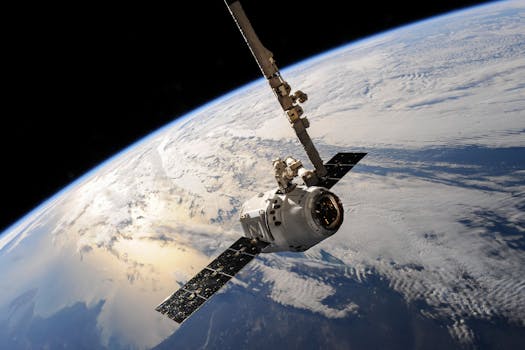
GEO Satellites: Unlocking the Power of Geostationary Orbit
GEO satellites, or Geostationary Orbit satellites, are a crucial component of modern satellite technology. By placing a satellite in geostationary orbit, approximately 36,000 kilometers above the equator, it is possible to maintain a continuous, high-bandwidth connection between the satellite and a specific region on the Earth’s surface. This allows for a wide range of applications, including telecommunications, navigation, and weather forecasting.
At the beginning of our discussion on GEO satellites, it is essential to understand the fundamental principles behind geostationary orbit. The concept of geostationary orbit was first proposed by scientist Arthur C. Clarke in 1945, and it has since become a cornerstone of satellite technology. By matching the satellite’s orbital period to the Earth’s rotational period, the satellite appears stationary in the sky, allowing for a fixed antenna to maintain a continuous connection.
Applications of GEO Satellites
GEO satellites have a wide range of applications, including telecommunications, navigation, and weather forecasting. In the field of telecommunications, GEO satellites are used to provide broadband internet access, broadcast television channels, and support mobile networks. The high-bandwidth connection provided by GEO satellites makes them ideal for applications that require high-speed data transfer, such as video conferencing and online gaming.
In addition to telecommunications, GEO satellites are also used for navigation purposes. The Global Positioning System (GPS) relies on a network of GEO satellites to provide location information and timing signals. This allows for accurate navigation and tracking, which is essential for a wide range of applications, including aviation, maritime, and land transportation.
Weather forecasting is another critical application of GEO satellites. By placing a satellite in geostationary orbit, it is possible to continuously monitor the weather patterns over a specific region. This allows for accurate forecasting and warning systems, which can help to prevent natural disasters and protect human life.
Benefits of GEO Satellites
The benefits of GEO satellites are numerous. One of the primary advantages is the ability to provide a continuous, high-bandwidth connection between the satellite and a specific region on the Earth’s surface. This makes GEO satellites ideal for applications that require high-speed data transfer, such as telecommunications and navigation.
Another benefit of GEO satellites is their ability to provide global coverage. By placing a network of satellites in geostationary orbit, it is possible to provide coverage to almost any region on the Earth’s surface. This makes GEO satellites ideal for applications that require global connectivity, such as international telecommunications and global navigation.
In addition to the technical benefits, GEO satellites also have significant economic benefits. The revenue generated by the satellite industry is substantial, and it is expected to continue to grow in the coming years. According to a report by the Satellite Industry Association, the global satellite industry generated over $350 billion in revenue in 2020, and it is expected to reach over $400 billion by 2025.
Challenges and Limitations of GEO Satellites
Despite the numerous benefits of GEO satellites, there are also several challenges and limitations. One of the primary challenges is the high cost of launching and maintaining a satellite in geostationary orbit. The cost of launching a satellite can be substantial, and it requires significant investment in infrastructure and personnel.
Another challenge facing the GEO satellite industry is the risk of interference and congestion. As the number of satellites in geostationary orbit continues to grow, there is an increasing risk of interference and congestion. This can lead to a decrease in the quality of service and an increase in the risk of system failure.
In addition to the technical challenges, the GEO satellite industry also faces significant regulatory challenges. The use of geostationary orbit is regulated by the International Telecommunication Union (ITU), and there are strict guidelines and regulations governing the use of this orbit. This can make it difficult for new companies to enter the market and for existing companies to expand their operations.
Conclusion
In conclusion, GEO satellites are a crucial component of modern satellite technology. By leveraging the unique advantages of geostationary orbit, GEO satellites are able to provide a wide range of applications, including telecommunications, navigation, and weather forecasting. While there are several challenges and limitations facing the GEO satellite industry, the benefits of these satellites make them an essential part of our daily lives.






